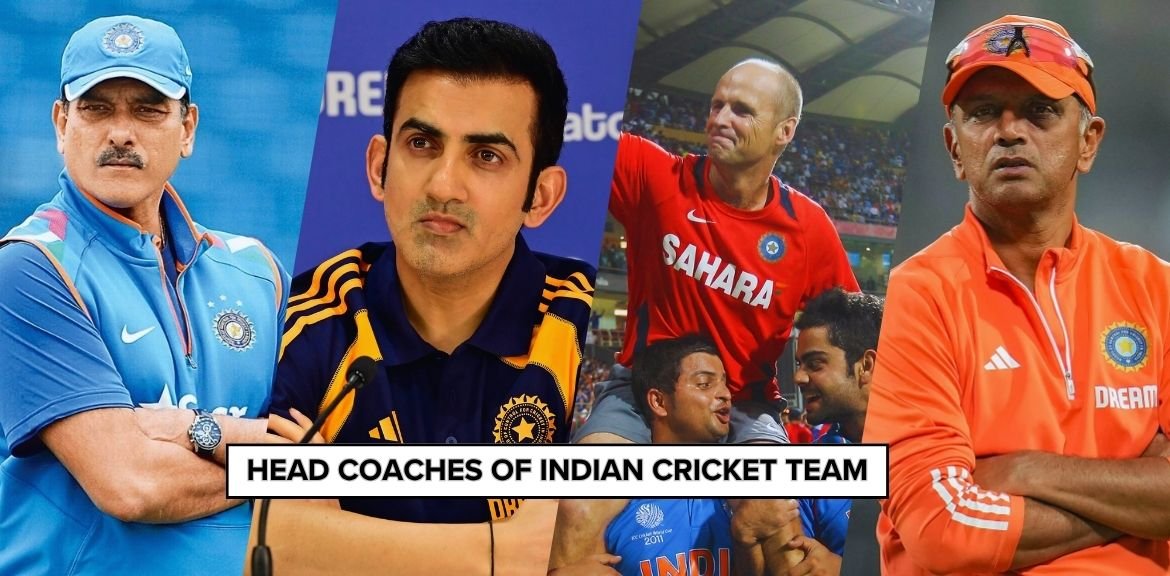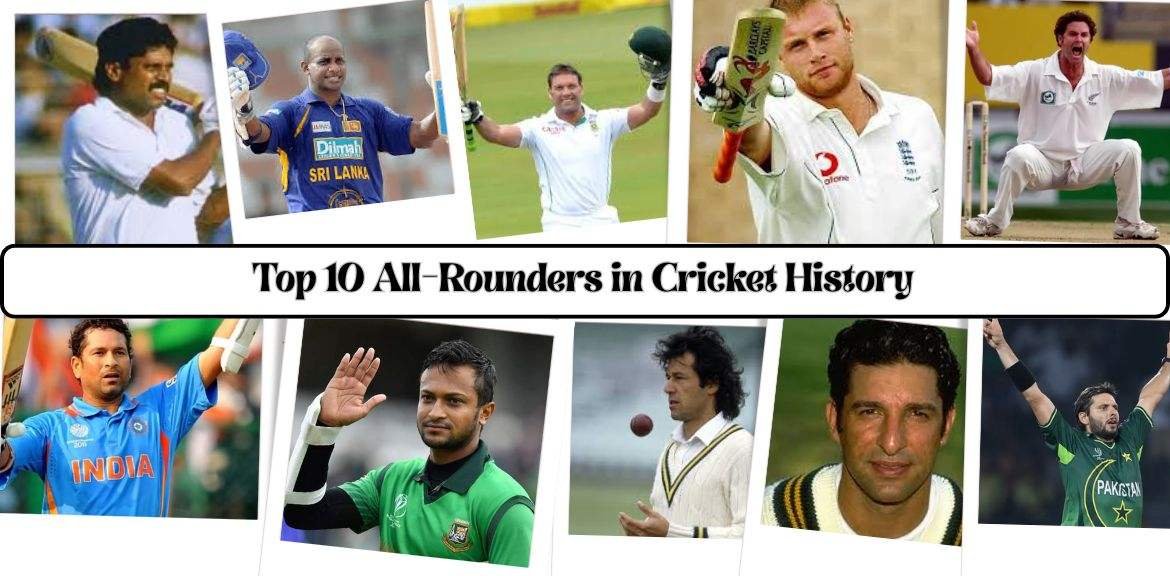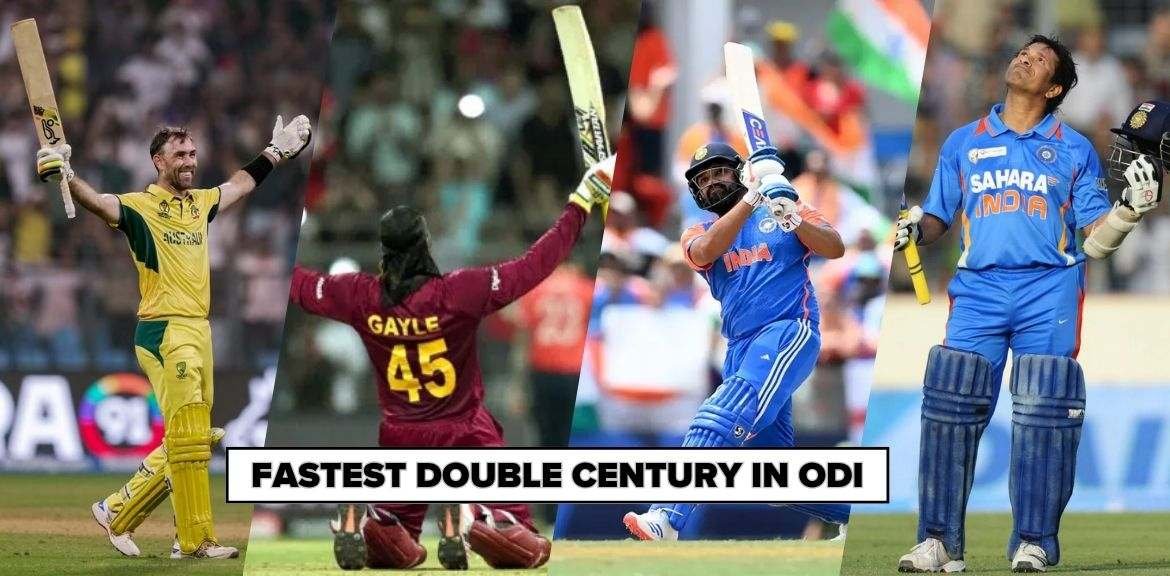Men or women, the head coaches of the Indian cricket teams, past and present, are synonymous with change, grit, and historic achievement. From the era of part-time managers to full-time coaches, these coaches have influenced the story of Indian cricket on the world stage. This article details the head coaches of the Indian national team, their tenure and notable achievements.
Head Coaches Of The Indian Cricket Team and Their Achievements
The men’s team has had 24 coaches since 1971, with Gautam Gambhir being the latest.
| Coach | Tenure |
| Keki Tarapore | 1971 |
| Hemu Adhikari | 1971-1974 |
| Gulabrai Ramchand | 1975 |
| Datta Gaekwad | 1978 |
| Salim Durrani | 1980-1981 |
| Ashok Mankad | 1982 |
| PR Man Singh | 1983-1987 |
| Chandu Borde | 1988 |
| Bishan Singh Bedi | 1990-1991 |
| Abbas Ali Baig | 1991-1992 |
| Ajit Wadekar | 1992-1996 |
| Sandeep Patil | 1996 |
| Madan Lal | 1996-1997 |
| Anshuman Gaekwad | 1997-1999 |
| Kapil Dev | 1999-200 |
| John Wright | 2000-2005 |
| Greg Chappell | 2005-2007 |
| Lalchand Rajput | 2007-2008 |
| Gary Kirsten | 2008-2011 |
| Duncan Fletcher | 2011-2015 |
| Anil Kumble | 2016-2017 |
| Ravi Shastri | 2017-2021 |
| Rahul Dravid | 2021-2024 |
| Gautam Gambhir | 2024–present |
- The late Keki Tarapore was named the inaugural coach of the Indian cricket team in 1971. He managed the Indian team during their England tour. Although Tarapore was not an official coach, he is considered the 1st coach of the Indian Men’s Cricket team.
- Hemu Adhikari was the coach from 1971-1974 and oversaw the West Indies and England Tour of India.
- In 1975, Gulabrai Ramchand became the coach and helped build the ODI team.
- In 1980, Salim Durrani brought a fresh perspective to the team and mentored the young talents.
- In 1983, PR Man Singh became the Indian coach and helped the team win the 1983 World Cup. His behind-the-scenes upliftment of players, training and morale-building played a key role in the win.
- Known for his calm demeanor, Chandu Borde became the coach in 1988 and won the Asia Cup with the team.
- In 1992, Ajit Wadekar was given the responsibility of coaching the Indian team. He was the first full-time cricket coach in India’s history and during his tenure, the team won 41 ODIs and 11 tests. He guided India to the World Cup cricket semifinals in 1996.
- Anshuman Gaekwad took over as coach in 1997 and contributed to the team’s 1998 Asia Cup victory.
- In 1999, Kapil Dev became the coach. He had a brief term because of match-fixing scandals.
- John Wright led India to the World Cup Finals in 2003 after assuming the role of coach in 2000.
- In 2008, Gary Kirsten became the new Indian coach. He played a key role in assembling the World Cup-winning team. India became the top-ranked country in the Test Ranking under his leadership.
- 2011 saw the mentorship of Duncan Fletchman. India won the 2013 Champions Trophy and reached the 2015 WC semis under his guidance.
- Anil Kumble was the coach from 2016-2017. Under him, India gave strong test performances and reached the 2017 Champions Trophy finals.
- After Kumble left the Indian squad, Ravi Shastri was appointed coach. He has had the longest stint as India’s coach to date. India became a dominant force in Test cricket because of Shastri, who gave the squad an aggressive style of play. India had a historic win in the Test against Australia and was ranked as the No. 1 Test team.
- In 2021, India’s most successful coach, Rahul Dravid, took over. In 2023, Dravid guided an unbeaten Indian team to the ODI World Cup Finals.
- Additionally, the team became the first team in the T20 World Cup to go undefeated. Gautam Gambhir was assigned to coach a youthful Indian team in 2024. During his reign, he has already won the ICC Champions Trophy.
Indian Women’s Cricket Team Head Coaches and Their Achievements
The evolution of the invisibility of the Indian women’s cricket team into a globally competitive team in- part, has been influenced by a variety of male and female head coaches since the early 2000s.
- Susha Shah was the first coach of the Women’s Cricket team, who was appointed in 2003. She remained in that position until 2007. The latter was during Shantha Rangaswamy’s own tenure. Like seamers, both had the advantage of being former Indian internationals with invaluable playing experience.
- Even in 2008, Sudha Shah remained in her position, and in 2010, she resigned as coach. K.V.P. Rao became the coach after Shah.
- In 2011, Anju Jain became the Indian Women’s Cricket team’s coach. She focused on the fitness of the players. She led the team brilliantly during her two years there, but some issues led to her termination.
- In 2013, Tushar Arothe became the coach. He received praise for leading Team India to the championship game. India had a successful bilateral series, including series victories in New Zealand and Sri Lanka, and won a T20 series in Australia and the Asia Cup while she was captain. Even though he continued to work for a few more months, his tenure was not without controversy because he was fired after leading Indian players to protest to the Committee of Administrators about his poor coaching and training practices. His cause was further hampered by his dismal performances in the tri-series against Australia and England and his defeats to Bangladesh in the Asia Cup.
- Purnima Rao was appointed as the coach in 2014 and again from 2015 to 2017. India had a very successful spell under her leadership, winning the series 3-2 and even the T20 series in Australia. She was abruptly fired in 2017 after coaching India in the Colombo qualifier due to a misunderstanding with the players, who wanted her fired.
- The women’s team was placed under Ramesh Powar‘s coaching in 2018. However, his tenure ended after a highly publicized altercation with senior player Mithali Raj during the 2018 ICC Women’s T20 World Cup. Despite the controversy, his coaching style was praised for encouraging the team to be aggressive and self-assured.
- WV Raman was named the coach after Powar. India finished first in the 2020 ICC Women’s T20 World Cup final and won several bilateral series. Even though he had a great time with some notable bilateral series triumphs, it was surprising that he was not retained as the head coach of the senior women’s team when Ramesh Powar was chosen by the Cricket Advisory Committee to take his place.
- After Powar’s second tenure ended, Amol Muzumdar was appointed as the coach. As India gets ready for two significant World Cups in the upcoming years, his appointment is viewed as a step towards combining player development with tactical expertise.
| Coach | Tenure |
| Sudha Shah | 2003–2007 |
| Shantha Rangaswamy | 2003–2007 |
| Sudha Shah | 2008–2010 |
| K. V. P. Rao | 2010 |
| Anju Jain | 2011–2013 |
| Tushar Arothe | 2013–2014 |
| Purnima Rau | 2014 |
| Sudha Shah | 2014 |
| Purnima Rau | 2015–2017 |
| Tushar Arothe | 2017–2018 |
| Ramesh Powar | 2018 |
| WV Raman | 2018–2021 |
| Ramesh Powar | 2021–2022 |
| Amol Muzumdar | 2023–present |
Conclusion
The appointment of the head coaches of India’s men’s and women’s cricket teams represents India’s growing importance in the sport. Each of these coaches has left performances at the helm in their own significant way; from the developmental years of Ajit Wadekar, to John Wright’s masterclass in strategic overhauling, to the World Cup glory with Gary Kirsten, through Ravi Shastri and Rahul Dravid’s ascendency. The likes of Tushar Arothe, Ramesh Powar and Amol Muzumdar have led the Indian women’s team in this upward graph globally. Indian cricket is about to get a fresh start with Gautam Gambhir and Amol Muzumdar at the helm, one that will be grounded in what was achieved and the promise of more.
FAQs
Ans. In 1971, the late Keki Tarapore was appointed as the Indian cricket team’s first coach.
Ans. It was under the coaching of Gary Kirsten that India won the 2011 World Cup.
Ans. Amol Muzumdar is the current coach of the Indian women’s cricket team.
Ans. Rahul Dravid is said to be the most successful team India coach.
Ans. Sudha Shah was the 1st coach of the Indian women’s cricket team.
Also check out: Top 10 All-Rounders in Cricket History: Legends Changed the Game




